12 Critical Flutter Development Challenges and How to Solve Them in 2025
A Guide to Building Scalable, Performant Flutter Apps That Don't Accumulate Technical Debt
12 Critical Flutter Development Challenges and How to Solve Them in 2025
After spending over a decade in the mobile development trenches, watching frameworks rise and fall, debugging production disasters at midnight, and shipping apps used by millions, I've learnt one thing: Every framework has teeth. Flutter is no exception.
Don't get me wrong. Flutter is brilliant. Google's cross-platform toolkit has revolutionised how we build apps, letting us ship to iOS, Android, the web, and desktops from a single Dart codebase. Companies like BMW, Alibaba, and Google Ads have bet big on it. But here's what the glossy tutorials won't tell you: real-world Flutter development comes with very real challenges that can derail projects, inflate budgets, and frustrate even experienced teams.
I've been neck-deep in Flutter since its early days, building everything from fintech apps handling millions in transactions to consumer apps with complex animations. Along the way, I've hit every pothole on the Flutter Road and learnt how to navigate them. This guide cuts through the marketing fluff to address the 12 most critical challenges you'll face in Flutter development and, more importantly, how to actually solve them.
Whether you're a startup CTO evaluating Flutter for your next product or a developer trying to ship production-ready code, these insights will save you time, money, and headaches.
1. State Management: The Make or Break Decision
The Challenge
State management is where Flutter projects live or die. I've seen codebases turn into unmaintainable spaghetti because teams either picked the wrong solution or didn't establish patterns early enough.
The problem? Flutter gives you too many options. Provider, Riverpod, BLoC, GetX, Redux, MobX each with vocal advocates and different philosophies. New developers often start with setState() for everything, which works fine for a hello-world app but becomes a nightmare when you're managing user authentication, API calls, and complex UI interactions simultaneously.
Real-world impact: I once inherited a Flutter app where state was managed with a mix of setState(), Provider, and global variables. Basic features like updating a user profile required changes in 12+ files. The onboarding time for new developers? It took three weeks to understand the state flow.
The Solution
Here's my battle-tested approach:
For small to medium apps (< 50 screens): Use Riverpod 2.0+. It's Provider's more capable successor with better compile-time safety, cleaner syntax, and no BuildContext headaches. The learning curve is gentler than BLoC, and it scales surprisingly well.
For large enterprise apps: Go with BLoC (Business Logic Component). Yes, it's more verbose. Yes, it requires more boilerplate. But when you're managing complex state across dozens of features with multiple developers, BLoC's rigid structure becomes an asset. The event-state pattern makes debugging straightforward, and testing becomes almost trivial.
Golden rule: Pick ONE pattern and document it in your team wiki. Create templates for common scenarios (authenticated API calls, form validation, list pagination). Code reviews should enforce consistency religiously.
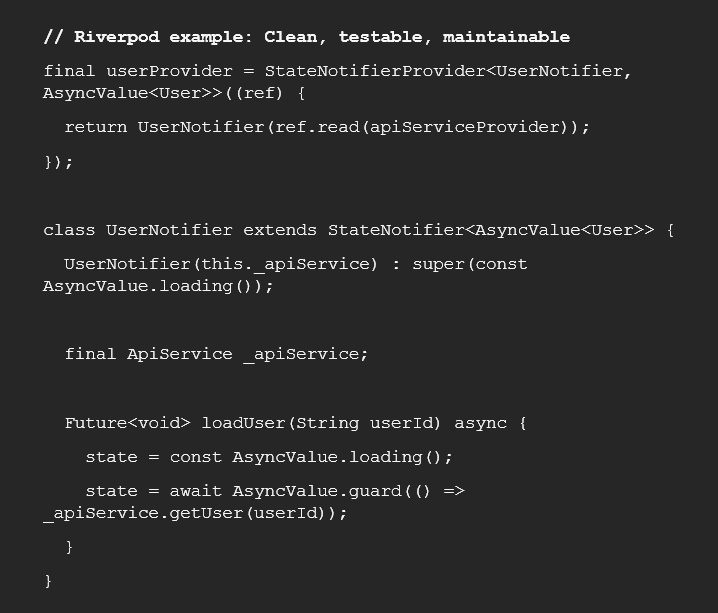
Pro tip: Start with Riverpod unless you have a compelling reason not to. You can always migrate to BLoC later if complexity demands it—I've done it twice.
2. Performance Optimization: When Smooth Becomes Sluggish
The Challenge
Flutter's promise of 60fps animations looks great in demos. Production is different. I have debugged apps that were flawless during development, but exhibited jankiness on real devices, particularly the mid-range Android phones that continue to dominate in emerging markets.
The culprits? Excessive widget rebuilds, unoptimized images, synchronous operations on the main thread, and memory leaks from unclosed streams. Flutter's reactive nature means a poorly structured widget tree can trigger hundreds of unnecessary rebuilds per second.
The Solution
Master Flutter DevTools. Seriously. This isn't optional. The Performance tab shows you exactly which widgets are rebuilding and why. The Memory tab reveals leaks before they hit production.
Practical optimizations I use on every project:
-
const constructors everywhere possible. If a widget's properties don't change, make it const. This single change reduced rebuild overhead by 40% in one app I optimized.


-
ListView.builder for lists, always. Never use ListView with a static list of children. ListView.builder lazy-loads items, dramatically reducing memory usage for long lists.
-
Image caching and optimization. Use cached_network_image package and compress images server-side. A 5MB uncompressed image will murder your app's performance.
-
Isolates for heavy computation. Parsing large JSON? Image processing? Use compute() to offload work to background isolates:

-
Profile builds regularly. Run flutter build apk profile and test on real devices, especially lower-end ones. Emulators lie about performance.
Red flag to watch for: If your app's main.dart.js bundle exceeds 2MB on web, you've got problems. Use deferred loading for routes.
3. Platform-Specific Code Integration: Bridging the Native Gap
The Challenge
Flutter's "write once, run anywhere" promise hits reality when you need platform-specific features. Want to implement Face ID on iOS? Access health data? Use a specific Android sensor? You're writing platform channels, bidirectional communication between Dart and native code (Swift/Kotlin).
Platform channels work, but they're finicky. Type mismatches crash apps. Asynchronous calls can cause race conditions. Documentation assumes you're fluent in both native platforms.
The Solution
First rule: Check if a plugin already exists on pub.dev before writing custom platform code. The Flutter ecosystem has matured significantly; chances are someone's solved your problem.
When you must write platform channels:
-
Define a clear interface contract. Document exactly what data flows in each direction, including error cases.
-
Use MethodChannel for simple calls, EventChannel for streams:


-
Test on real devices early and often. Platform code that works in the simulator might fail on actual hardware.
-
Handle plugin version conflicts proactively. Use dependency overrides when multiple plugins depend on different versions of native libraries.
Time-saver: Create a "native bridge" module that centralizes all platform channel code. This makes maintenance 10x easier.
4. App Size Bloat: The Download Killer
The Challenge
Flutter apps are objectively larger than native apps. The framework includes the Dart runtime and Skia rendering engine, adding baseline overhead. I've seen developers ship 50MB+ APKs for apps that should be 15MB.
This matters. In markets with expensive or slow mobile data, every megabyte affects download conversion rates. Google Play's data shows that for every 6MB increase in APK size, install conversion decreases by 1%.
The Solution
Aggressive optimization tactics:
-
Enable code shrinking and obfuscation:
![]()
-
Use app bundles (.aab) instead of APKs. Android App Bundles let Google Play serve optimized APKs per device configuration:
![]()
This alone reduced one app from 45MB to 28MB for most users.
-
Audit dependencies ruthlessly. Run flutter pub deps and question every package. That convenient utility package adding 2MB? You can probably rewrite its functionality in 50 lines.
-
Split assets by density. Don't ship 4x images to devices that only need 2x:
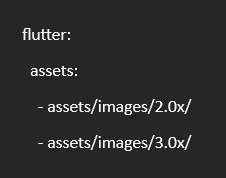
-
Lazy-load features. Use deferred imports for routes users might never visit:

-
Compress images properly. Use WebP format and compress aggressively. I use TinyPNG API in our CI/CD pipeline reduced image assets by 60% with no visible quality loss.
Target sizes:
-
Android: Under 20MB for the base APK
-
iOS: Under 30MB for the IPA
-
Anything over 50MB needs serious investigation
5. Cross-Platform Testing and Debugging: Finding the Needle in Multiple Haystacks
The Challenge
"Works on my machine" is bad. "Works on my iPhone but crashes on Samsung Galaxy" is worse. Flutter's cross-platform nature means bugs can be platform-specific, device-specific, or configuration-specific.
I've debugged issues that only appeared on Android 11, only in dark mode, only when the user had a specific language setting. Reproducing these reliably is hard. Fixing them without regression testing is impossible.
The Solution
Build a multi-layered testing strategy:
1. Unit Tests (70% of tests): Test business logic in isolation. Fast, reliable, catches most bugs.
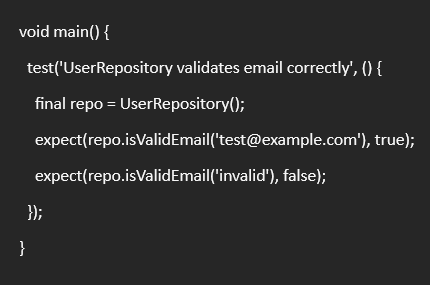
2. Widget Tests (20% of tests): Test UI components without launching a full app.

3. Integration Tests (10% of tests): Test critical user flows end-to-end on real devices.
Leverage Firebase Test Lab (or AWS Device Farm): These services run your tests on hundreds of real device configurations. They're not free, but they catch device-specific issues you'd never find otherwise. We run integration tests on 15 device configurations per release.
Golden file testing for UI consistency:
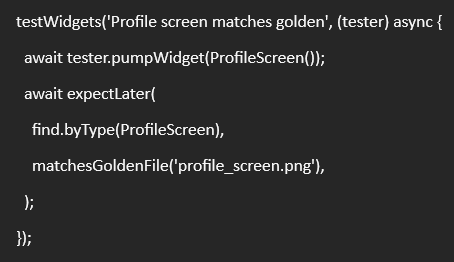
Pro debugging tip: Use flutter logs to capture device logs across all connected devices simultaneously. Add custom log tags for different modules. When a QA reports "app crashed," you want logs, not guesses.
CI/CD is non-negotiable: Set up GitHub Actions, Codemagic, or Bitrise to run tests on every commit. Our pipeline runs unit tests in 3 minutes, widget tests in 8 minutes, and gates merges on passing tests. Catches bugs before they reach QA.
6. Requirement Analysis and Project Scope: The Silent Project Killer
The Challenge
This isn't technical, but it sinks more Flutter projects than any bug. Vague requirements lead to scope creep, which leads to rushed code, which leads to technical debt, which leads to maintenance nightmares.
I've seen projects double their timeline because "simple" features like "social sharing" turned into "share to 12 platforms with custom formatting, analytics tracking, and deep linking." The Flutter code itself was fine—the problem was no one defined what "social sharing" meant until week 10 of a 12-week sprint.
The Solution
Front-load the requirement analysis. Seriously.
My pre-project checklist:
-
Document user stories with acceptance criteria:
-
As a [user type]
-
I want [feature]
-
So that [benefit]
-
Acceptance criteria: [specific, testable conditions]
-
Wireframe every screen. Use Figma, Sketch, or even pencil and paper. Get stakeholder sign-off BEFORE writing code.
-
Identify third-party integrations early. Does the app need payment processing? Push notifications? Video calls? Research plugin options NOW. I've had to refactor entire features because a critical plugin didn't support a required platform.
-
Create a technical specification document covering:
-
Architecture (clean architecture, MVVM, etc.)
-
State management approach
-
API contract
-
Database schema
-
Third-party services
-
Testing strategy
-
Build an MVP first. Ship a minimal version to a small user group. Real user feedback is worth more than a hundred stakeholder meetings.
Red flag: If you can't describe the core feature in one sentence, your requirements aren't clear enough.
Time investment: Spend 20% of project time on requirement analysis and technical planning. You'll save 50% on development and debugging.
7. Complex UI and Animations: Beauty vs. Performance
The Challenge
Flutter makes building beautiful UIs deceptively easy. Custom animations, fancy transitions, particle effects , it's all possible. But "possible" doesn't mean "performant."
I've reviewed apps with stunning hero animations that dropped to 15fps on mid-range devices. The problem? Animations triggering complex widget rebuilds, unoptimized opacity animations, and no performance testing until users complained.
The Solution
Animation performance rules:
-
Use Transform and Opacity carefully. These trigger repaints. Transform.translate is fast; changing a widget's position in the tree is slow.
-
Prefer implicit animations (AnimatedContainer, AnimatedOpacity). Flutter optimizes these internally.
-
Use RepaintBoundary for complex animated widgets:

This isolates repaints, preventing entire screen redraws.
-
Profile animations on target devices. 60fps on your Pixel 7 Pro means nothing if your users have Galaxy A13s.
-
Reduce animation complexity on lower-end devices:
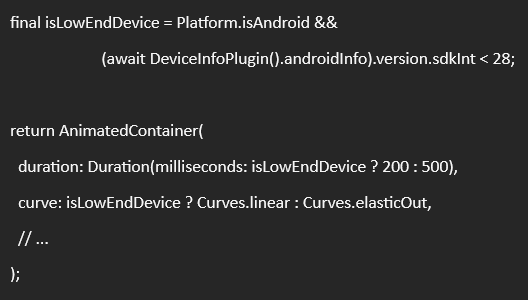
-
Avoid nested animations. Each animated widget adds computational overhead. Sometimes a simpler design is smarter.
Case study: We redesigned an onboarding screen with elaborate animations. Beautiful, but tested at 30fps on budget devices. Simplified the animations, added RepaintBoundary widgets, reduced from 5 simultaneous animations to 2 sequential ones. Result: 55fps on the same devices, completion rate up 12%.
8. Overcomplicated Codebase: Technical Debt's Silent Accumulation
The Challenge
Flutter's flexibility is a double-edged sword. You can structure code a hundred different ways. Without discipline, projects turn into architectural horror shows—God classes with 5,000 lines, circular dependencies, business logic in widgets, zero separation of concerns.
I inherited a Flutter project where the main screen's build() method was 800 lines long, containing API calls, state management, navigation logic, and UI code. Changing a button color required understanding the entire authentication flow.
The Solution
Enforce clean architecture from day one:
1. Feature-based folder structure:

2. Keep widgets dumb. UI widgets should receive data and callbacks, nothing more:

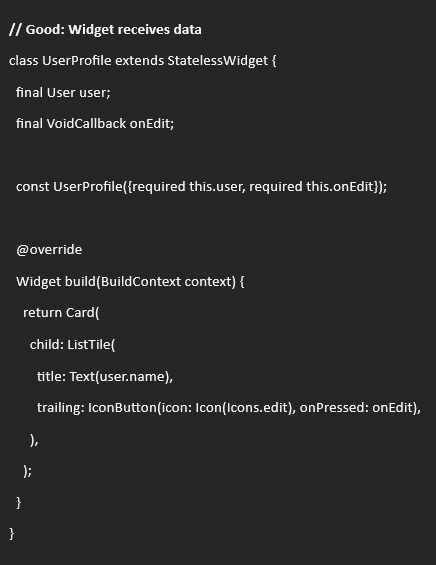
3. Single Responsibility Principle: Each class should do ONE thing. If you're struggling to name a class, it probably does too much.
4. Code reviews with teeth: Every PR must be reviewed by at least one senior developer. We have a checklist:
-
[ ] No business logic in widgets
-
[ ] Classes under 300 lines
-
[ ] Methods under 50 lines
-
[ ] No hardcoded strings
-
[ ] Follows established patterns
5. Refactor continuously: Dedicate 15% of sprint time to refactoring. Pay down technical debt before it compounds.
Linting is your friend: Use flutter_lints or very_good_analysis packages. Configure your linter aggressively. Auto-format on save.
]
9. Handling Asynchronous Operations: Futures, Streams, and the Async Minefield
The Challenge
Asynchronous programming is hard. Flutter's async/await makes it easier, but you can still shoot yourself in the foot memory leaks from unclosed streams, race conditions, unhandled errors crashing apps, and futures that never complete.
Common mistakes I see:
-
Not canceling subscriptions in dispose()
-
Missing error handling in async functions
-
Using async/await inside build() methods
-
Creating new streams on every rebuild
The Solution
Async best practices:
1. Always handle errors explicitly:

2. Cancel stream subscriptions:
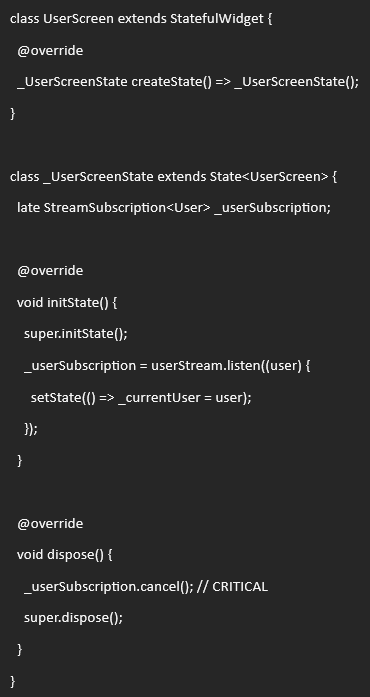
3. Use FutureBuilder and StreamBuilder for UI:

4. Dart DevTools for async debugging: The Timeline tab shows exactly when futures resolve and streams emit. Use it to diagnose race conditions.
5. Timeout long-running operations:

Memory leak detector: Use leak_tracker package in development. It catches unclosed streams and subscriptions automatically.
10. Plugin Ecosystem Limitations: When pub.dev Doesn't Have It
The Challenge
Flutter's package ecosystem has grown exponentially, but it still lags behind native iOS and Android. Sometimes the plugin you need doesn't exist. Sometimes it exists but is abandoned (no updates in 2 years, doesn't support null safety). Sometimes there are 5 competing plugins and all have critical issues.
I needed Bluetooth Low Energy functionality once. Found 3 plugins. One didn't support iOS, one had a memory leak bug unfixed for 8 months, one was poorly documented and missing features. Ended up forking one and fixing it ourselves—three weeks of unplanned work.
The Solution
Strategic approach to plugins:
1. Evaluate plugins thoroughly BEFORE committing:
-
Last update date (< 6 months preferred)
-
GitHub issues (open vs. closed ratio)
-
Platform support (does it support your targets?)
-
Documentation quality
-
Maintainer responsiveness
-
Null safety support
-
Flutter 3.x compatibility
2. Have a Plan B: Before building a feature around a plugin, have a fallback strategy:
-
Alternative plugins
-
Native implementation timeline
-
Feature scope reduction
3. Fork and maintain if necessary: If a plugin is 90% perfect but unmaintained, fork it. We maintain forks of 3 plugins—adds maintenance overhead but beats blocked features.
4. Build custom plugins when justified: For complex native integrations, sometimes it's cleaner to build a custom plugin than hack around a poor existing one. Factor in long-term maintenance costs.
5. Contribute back: Found a bug? Fix it and submit a PR. The ecosystem improves when we all participate.
6. Vendor critical plugins: For production apps, copy critical plugin code into your repo. Protects against plugin deletion or breaking changes.
Reality check: If you need bleeding-edge native features (latest iOS APIs, brand-new Android capabilities), Flutter might lag behind native development by 6-12 months. Plan accordingly.
11. CI/CD and Release Management: Automating the Last Mile
The Challenge
Manual releases are error-prone, time-consuming, and don't scale. Yet I regularly encounter Flutter teams doing manual builds, manual testing, manual deployment to app stores. This works for a team of 2 shipping monthly. It breaks catastrophically with 5+ developers shipping weekly.
Common pain points:
-
Environment configuration differences between dev machines
-
Forgetting to increment version numbers
-
Inconsistent build flags
-
No automated testing before release
-
Manual certificate management
-
App store submission delays
The Solution
Build a robust CI/CD pipeline. It pays for itself after the first release.
Essential components:
1. Automated builds on every commit:

2. Automated testing gates:
-
Unit tests on every commit
-
Widget tests on every PR
-
Integration tests on main branch
-
Block merges if tests fail
3. Automated versioning: Use git tags to trigger versioned builds. No more forgetting to bump pubspec.yaml.
4. Separate build environments:
-
Development: Connects to dev APIs, verbose logging
-
Staging: Mimics production, used for QA
-
Production: Optimized builds, production APIs
5. Store signing certificates in CI secrets: Never commit certificates to git. Use GitHub Secrets, GitLab CI/CD variables, or dedicated secret management.
6. Automated store deployment: Tools like Fastlane automate App Store and Play Store submissions. Set it up once, save hours per release.
Our pipeline:
-
Developer pushes to feature branch
-
GitHub Actions runs unit + widget tests (3 min)
-
Developer opens PR
-
GitHub Actions runs full test suite + builds APK (8 min)
-
Reviewer approves
-
Merge to main triggers staging build + deployment
-
QA tests staging build
-
Tag release (v1.2.3) triggers production build
-
Fastlane submits to stores
-
Monitor crash reports in first 24 hours
Total hands-on time per release: ~30 minutes. Used to take 4 hours with manual processes.
Recommended tools:
-
Codemagic: Flutter-first CI/CD, excellent integration
-
GitHub Actions: Free for open source, flexible
-
Bitrise: Good mobile focus, paid
-
Fastlane: Store submission automation
Pro tip: Set up automatic app signing with Match (Fastlane tool). Eliminates certificate hell.
12. App Security and Compliance: Protecting Users in a Dangerous World
The Challenge
Security is often an afterthought until it's too late. I've audited Flutter apps with API keys hardcoded in Dart code (trivially extractable), no certificate pinning (vulnerable to man-in-the-middle attacks), unencrypted local storage (exposing user data), and zero compliance with GDPR, CCPA, or HIPAA.
The threat landscape is real. Decompiling Flutter apps is straightforward. Attackers can intercept network traffic, inject malicious code, steal user data, or reverse engineer proprietary algorithms.
The Solution
Security must be baked in, not bolted on.
1. Never hardcode secrets:
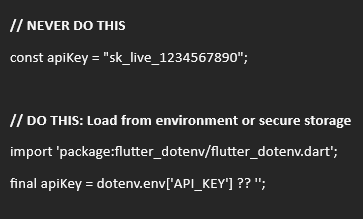
Use flutter_dotenv for API keys, and keep .env files out of git.
2. Implement certificate pinning: Prevents man-in-the-middle attacks by validating server certificates.
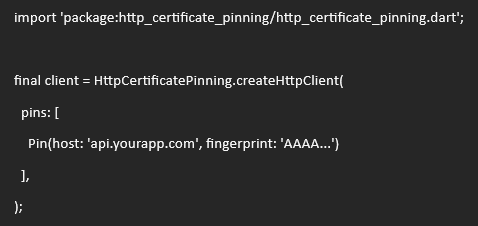
3. Encrypt sensitive local data:
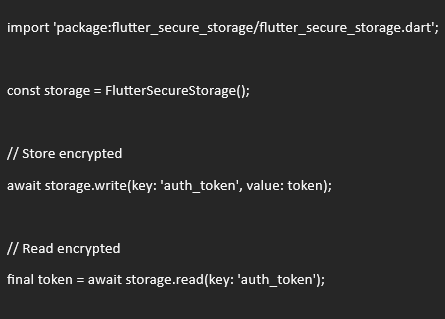
flutter_secure_storage uses iOS Keychain and Android Keystore—hardware-backed encryption.
4. Use Firebase Auth (or equivalent) for authentication: Don't roll your own auth. Use battle-tested solutions. Firebase Auth handles OAuth, biometrics, multi-factor authentication, and token management securely.
5. Obfuscate builds:
flutter build apk --obfuscate --split-debug-info=build/debug-info
Makes reverse engineering harder (not impossible, but harder).
6. Implement proper authorization: Never trust client-side permissions. Validate EVERY action server-side.
7. Compliance checklists:
GDPR (if serving EU users):
-
[ ] Privacy policy accessible in-app
-
[ ] Explicit consent for data collection
-
[ ] Right to deletion implemented
-
[ ] Data portability supported
-
[ ] Data breach notification plan
CCPA (California users):
-
[ ] Do Not Sell My Info option
-
[ ] Data disclosure requests supported
HIPAA (healthcare data):
-
[ ] Encrypted data at rest and in transit
-
[ ] Access logging and auditing
-
[ ] Business Associate Agreements with vendors
8. Regular security audits: Run automated scans with tools like:
-
MobSF (Mobile Security Framework): Open-source security analysis
-
OWASP Dependency Check: Find vulnerable dependencies
-
Snyk: Automated vulnerability scanning in CI/CD
9. Monitor crashes and errors: Use Firebase Crashlytics or Sentry. You want to know about security exceptions immediately.
10. API security:
-
Use HTTPS exclusively
-
Implement rate limiting
-
Use OAuth 2.0 for authentication
-
Validate all inputs server-side
-
Never expose admin endpoints to mobile apps
Case study: A fintech app I worked on underwent a security audit after MVP. Found 12 vulnerabilities including hardcoded Stripe test keys, no certificate pinning, and plaintext password storage in logs. Fixed all issues, implemented the practices above. Passed subsequent audit, achieved SOC 2 Type II compliance. Security isn't expensive when built in—it's expensive when patched in later.
Conclusion: Building Flutter Apps That Last
After more than a decade building mobile apps and years deep in Flutter, here's what I know for certain: the framework is not your bottleneck. Your processes are.
Flutter gives you the tools to build exceptional cross-platform apps. But tools alone don't deliver business value. The difference between a project that ships on time and scales successfully versus one that drowns in technical debt comes down to:
-
Choosing the right architecture upfront (state management, folder structure, testing strategy)
-
Establishing coding standards and enforcing them (code reviews, linting, CI/CD gates)
-
Prioritizing performance from day one (profiling, optimization, testing on real devices)
-
Planning for security and compliance early (not scrambling before launch)
-
Investing in automation (testing, building, deploying)
-
Maintaining discipline as the project grows (refactoring, documentation, technical debt management)
The 12 challenges covered in this guide are not theoretical. They're the issues that repeatedly surface in real Flutter projects—from startups scrambling to launch MVPs to enterprises maintaining apps used by millions. I've encountered every one, made mistakes with most, and developed solutions that actually work in production.
If you're starting a Flutter project tomorrow:
-
Spend a week on architecture and planning before writing code
-
Pick your state management solution and document it
-
Set up CI/CD in week one, not month three
-
Profile performance early and often
-
Budget for security from the start
If you're maintaining an existing Flutter project:
-
Audit your codebase against this checklist
-
Prioritize the highest-impact fixes (security, performance, testing)
-
Allocate sprint time for refactoring
-
Don't let technical debt compound
If you're evaluating Flutter for your business:
-
Flutter is mature enough for production across mobile, web, and desktop
-
Plan for platform-specific code where needed
-
Budget 20% more development time than native if you need cutting-edge native features
-
Partner with developers who understand Flutter's nuances
The Flutter ecosystem is evolving rapidly. Flutter 4.0 promises better performance, smaller app sizes, and improved tooling. The community is strong and growing. The challenges highlighted here will become easier over time—but they won't disappear.
Master these fundamentals, and you'll build Flutter apps that don't just work—they scale, perform, and delight users across every platform.
Ready to Build Scalable Flutter Apps?
At VoxturrLabs, we've spent years mastering Flutter development, shipping cross-platform apps for startups and Fortune 500 companies alike. Our business-first approach means we don't just write code—we architect solutions that drive growth, reduce time-to-market, and scale with your business.
Whether you're looking to:
-
Build a new Flutter app from scratch with clean architecture and best practices baked in
-
Rescue an existing project drowning in technical debt
-
Optimize performance for apps struggling with speed and stability
-
Scale your development team with experienced Flutter engineers
-
Migrate from native to Flutter without disrupting your user base
We've solved these challenges dozens of times. Our team combines deep technical expertise with a pragmatic understanding of business constraints—timelines, budgets, and market realities.
Let's talk about your Flutter project. Book a free 30-minute consultation where we'll:
-
Review your technical requirements and challenges
-
Identify potential roadblocks before they derail your project
-
Outline a clear path from concept to production
-
Provide honest recommendations (even if that means Flutter isn't the right fit)
At Voxturrlabs, we've spent years mastering strategic content, developing messaging systems for startups and established brands alike. Our revenue-first approach means we don't just write copy; we architect content systems that drive clarity, shorten sales cycles, and build unshakeable market conviction.
Whether you're looking to:
Build a powerful messaging foundation from the ground up
Rescue a content strategy that isn't generating leads or clarity
Optimize your existing assets to consistently convert prospects
Scale your content production without diluting your core story
Migrate your audience from a feature-focused to a value-focused narrative
We've solved these challenges dozens of times. Our team combines deep narrative expertise with a pragmatic understanding of business goals, pipeline velocity, deal size, and competitive differentiation.
Let's talk about your App Buiding strategy. Book a free 30-minute consultation

Gaurav Lakhani is the founder and CEO of Voxturrlabs. With a proven track record of conceptualizing and architecting 100+ user-centric and scalable solutions for startups and enterprises, he brings a deep understanding of both technical and user experience aspects. Gaurav's ability to build enterprise-grade technology solutions has garnered the trust of over 30 Fortune 500 companies, including Siemens, 3M, P&G, and Hershey's. Gaurav is an early adopter of new technology, a passionate technology enthusiast, and an investor in AI and IoT startups.

Ready for a Next-Level of Enterprise Growth?
Let's discuss your requirements
You May Also Like

App Development
Can Flutter Build Enterprise-Grade Desktop Applications? The 2025 Reality Check
An honest 2025 reality check on when Flutter desktop actually works for enterprise apps, where it struggles, and how CTOs should decide.
25 min read

App Development
App Development Charges in 2025
Discover the real App Development Charges in 2025. Learn stage-by-stage costs, tips to save, and how VoxturrLabs helps you build smarter. Book a free consult now!
19 min read

App Development
Flutter App Development Cost in 2025: Complete Breakdown
2025 guide to Flutter app development cost. See ranges from $10k to $200k+, key cost drivers, complexity tiers, region wise rates, and a simple estimate cost breakdown,
7 min read
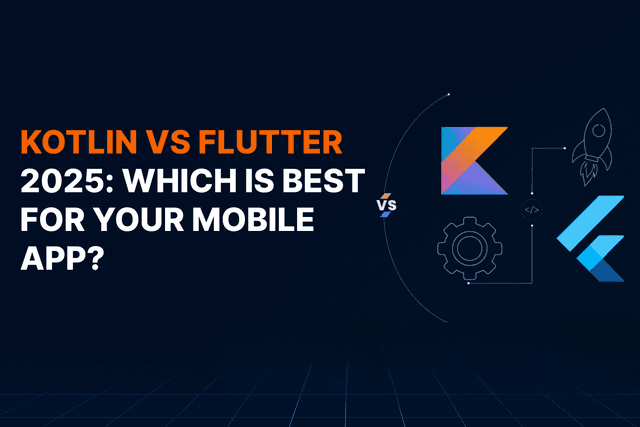
App Development
Kotlin vs Flutter 2025: Which Is Best for Your Mobile App?
A practical comparison guide for product leaders, founders, and mobile teams choosing their cross-platform stack
16 min read

App Development
Best Backend for Flutter: Which Cloud Services Actually Work in 2025?
Firebase vs Supabase vs AWS Amplify: A practical guide to choosing the right backend for your Flutter app without the hype or surprises.
9 min read

App Development
Why Flutter Web App Development?
One codebase for mobile and web sounds perfect. But Flutter Web isn't right for every project. Here's when it works, when it doesn't, and how to choose wisely.
10 min read
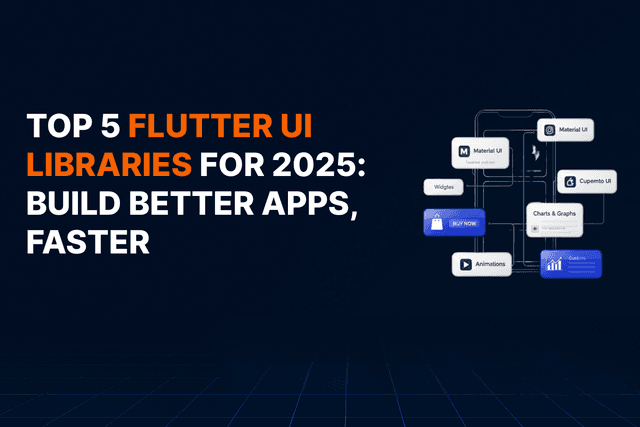
App Development
Top 5 Flutter UI Libraries for 2025: Build Better Apps, Faster
Your Flutter UI Toolkit Just Got a Major Upgrade
9 min read

App Development
How to Choose the Right Flutter App Development Services Partner
A practical guide for CTOs and founders to vet Flutter development partners. Compare costs, evaluate portfolios, and avoid common hiring mistakes.
11 min read
Start a conversation by filling the form
Once you let us know your requirement, our technical expert will schedule a call and discuss your idea in detail post sign of an NDA.